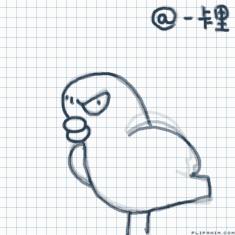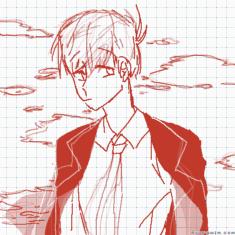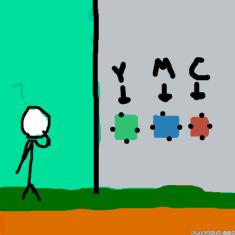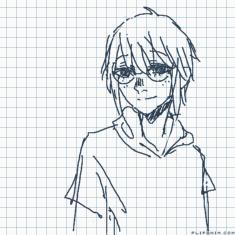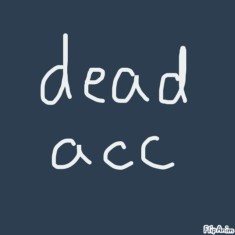my 7 page essay on animation


14 comments
VoidSirenDarkmoon[OP]
12.02.2021 15:38
LinkMany people sit back and watch animations, watching the stories play on the screen, but they don’t really think much of the art of animation itself. They don’t think of the years of work, hundreds of artists, and the voice actors all behind the film. The movies you see are made by a lot of animators. Each animator with their own part, all weaved together to make the story you love. Animation is a young, new art that is developing quickly and is enjoyed throughout the world.
So how does animation work? It is easy to learn, but hard to master, because it probably is the most complicated art of them all. “You're not just creating traditional art with still images, but you are also manipulating time, mimicking real movement in slow motion, acting through body language, and you're telling a compelling story” (Shields) .Every artist has their own workflow, or how they work. They have their own way of doing things because artists are people who don’t like to do what other people tell them to do (Rusty Animator).
VoidSirenDarkmoon[OP]
12.02.2021 15:38
LinkAll animation is made up of frames, which is a sequence of images that make a character move. There is more than one type of animation.There is the traditional hand-drawn animation, where every frame is drawn by hand. This technique used to be on paper, but now we do it on drawing tablets. There is 2D animation, where every part of the body is just drawn once and moves at joints the animator programmed. There is also stop motion animation that uses puppets to make a movie, by taking pictures of each small movement to create movement throughout the puppet. The puppets can move because they are built with a skeleton called an armature. Computer animation also uses virtual armatures, making the body up of tiny squares( Shields) . Animators are like puppeteers. They take drawings or puppets and bring life to them, or at least, an illusion that they are alive. They are like actors, even though they are not usually seen on stage or in front of a microphone(Extra credits).
VoidSirenDarkmoon[OP]
12.02.2021 15:38
LinkThere are many different forms of animation; digital animation, traditional animation, stop-motion animation, and pixel animation. There are also a lot of mediums to choose from. There is film making, video games, and special effects (Extra credits)
You do not have to go to school to become a great animator. In fact, the people who do go to school for it just go for the title of “Yes, I am a professional at doing this.” But there are other ways than going to college just for animating. There are good schools for animation out there, regardless. If you want to go to a school for animation, check out what their students have made in the past, and see if you can find the graduate’s job placement rate to see if it is a good quality school for you to go to. Animation is a pretty competitive field for getting a job. There are a lot of people out there trying to animate for a living, and you’ll often find yourself competing against people with more experience than you do.
VoidSirenDarkmoon[OP]
12.02.2021 15:39
LinkSo you have to make sure the quality and creativity of your work is incredibly creative and unique. The stronger your artist portfolio, the better of a chance you get to be hired in the field of animation (Extra credits).
A good animator is always studying movement, watching the world around them for interesting walks, and trying to figure out how to animate that, or exaggerate that. Animators observe people, and try to figure out how they work. Watch the video slowly to figure out how to draw it. Do the action, if you want to make it feel more natural, and to get a feel of the body mechanics. It is recommended an animator studies acting, or gets into acting. You don’t have to be a good actor, even though that may be useful, you just have to understand the art. You should also study other people’s animations and get inspired. Don’t use their animation though. That is copying their work and that is somewhat illegal. An animation is one animator’s interpretation of reality.
VoidSirenDarkmoon[OP]
12.02.2021 15:39
LinkAvoid commonly used things in animation, insead, go all out and choose the most random thing you can think of. A good animator doesn’t necessarily need to be able to draw. Except if you are a 2D animator, then you are kind of a lost cause. In the other animation mediums, drawing still can be a useful thing for you. An animator should be a team player, because animation is usually a collaborative project, and your group is most likely to be fairly large (Extra credits).
So how do you animate? There are 12 principles in animation, but we will be going over the first nine. The first one is called squash and stretch. It is a principle that animators use to emphasize the movement, like how when you pause a Disney movie, and it looks really hysterical? The animators are using squash and stretch to emphasize the movement to make it look more realistic and more appealing to the audience. If the thing you are animating doesn’t have a lot of squash and stretch, it looks like it is a hard object, like a bowling ball.
VoidSirenDarkmoon[OP]
12.02.2021 15:39
LinkIn order for squash and stretch to look good, you have to try and keep the volume of the object consistent (AlanBeckerTutorials).
The second principle is anticipation, which is where you prepare for an action to attract the watcher’s eyes to understand what is going on in the animation. The character should not be performing any competing actions, so that the viewer can fully understand what is going on, and not be lost or confused. It is important to make it so it is as easy as possible for the viewer to know what is going on, so they do not have to re-watch the scene over and over again (AlanBeckerTutorials).
VoidSirenDarkmoon[OP]
12.02.2021 15:39
LinkThe third principle is called staging, which is making sure what you are making is clear and easy to understand. You make one character do one thing, but let them finish their motion before making another character starts to prevent confusion. This principle covers so many areas of animation, like the background, timing, camera angle, and what the character is doing. It is important to know when to be close up, or far away. Close ups are good for expressions, while far away is good for big actions. Make sure to keep the main action generally in the center of the screen. If you have words, try to keep it on screen long enough for one to be able to read it out loud three times. For this principle, you also should exaggerate expressions. If a character is happy, make then look even more happy. Go over the top, and take away anything that would interfere with the feel that you are trying to get across (AlanBeckerTutorials).
VoidSirenDarkmoon[OP]
12.02.2021 15:40
LinkThe fourth principle is straight ahead or pose to pose. Both of them are styles of animating, and each have their own purpose and each make different tasks easier. Straight ahead is when you draw each frame as you go, and it is recommended for unexpected things like fire, explosions, and water. Pose to pose is when you draw the main positions, called key frames, then go back and fill the missing frames in, to be able to plan better than you would with frame to frame, making it easy to fix any mistakes you made (AlanBeckerTutorials).
The fifth principle is follow through and overlapping action. This is when you have accessories on a character that fall behind on the rest of an action, like a cloak. This principle is often associated with a technique called drag. The names all basically mean the same thing, but in different ways. The part keeps moving, even though the figure has stopped. This principle adds life to a character (AlanBeckerTutorials).
VoidSirenDarkmoon[OP]
12.02.2021 15:40
LinkThe sixth principle is called slow in and slow out. This principle refers to how every movement, in living or nonliving objects, starts out slow, and ends slow. You would not use it for a bouncing of a ball, but you should use it when a car moves (AlanBeckerTutorials).
The seventh principle is called arcs. Most living objects move in a circular motion, otherwise known as arcs. When you are typing your fingers move in an arc, if not you would have more letters than you would like. When movements are very fast, you can use arcs to add a smear, so you don’t have to do a lot of frames (AlanBeckerTutorials).
The eight principle is called secondary action. It is a lot like follow through and overlapping action, the fifth principle, but it is not. This principle adds more dimension to the character, for example, if someone is skipping, the primary movement may be the legs, but make the arms the secondary action, to help complement the primary action (AlanBeckerTutorials.)
VoidSirenDarkmoon[OP]
12.02.2021 15:40
LinkThe ninth principle is called timing. It is all about timing. Timing helps state the personality and nature of an animation. Timing is greatly affected by the amount of frames. The more frames, the slower the action. The less frames, the faster the animation will be (AlanBeckerTutorials).
The other three principles are exaggeration, solid drawing, and lastly appeal. Those are the 12 principles of animation.(AlanBeckerTutorials)
Animation is a young, new art that is developing quickly and is enjoyed throughout the world. If there wasn’t animation, then there would be less things to entertain you. Animation is in games, and movies, making it more entertaining to play and watch. It is a big industry that many people are interested in, making it hard to get a job, but the rewards are definitely worth it. The animators are easily overlooked, but there are usually more than one person working on the project you are watching. What do you think of the animation industry? Do you think you would get interested in
VoidSirenDarkmoon[OP]
12.02.2021 15:40
Link(voila.)
VoidSirenDarkmoon[OP]
12.02.2021 15:52
Link(everything you need to know and more)
